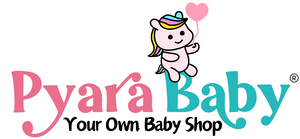Unlocking Baby Comfort: Your Complete Guide to Mastering the Art of Swaddling
Baby swaddling is a time-honored tradition that offers numerous benefits for both newborns and parents alike. When done correctly, swaddling can provide comfort, security, and better sleep for your little one. However, mastering the art of swaddling requires understanding the technique and implementing it safely. In this guide, we'll explore the ins and outs of effective baby swaddling, from choosing the right swaddle to mastering the technique for optimal results.
- Choose the Right Swaddle: Selecting the appropriate swaddle is the first step towards effective swaddling. Look for swaddles made from soft, breathable fabrics like cotton or bamboo to ensure your baby's comfort. Opt for swaddles with adjustable closures or Velcro tabs for a customizable fit that can accommodate your baby's size and movement.

- Understand the Purpose: Swaddling serves to mimic the cozy environment of the womb, providing comfort and security to newborns. Understanding this purpose can help you approach swaddling with the right mindset, knowing that it can help soothe your baby and promote better sleep.
- Learn the Technique: Mastering the swaddling technique is crucial for ensuring your baby's safety and comfort. Lay the swaddle blanket flat in a diamond shape and place your baby on their back in the center. Fold one corner of the blanket over your baby's chest, tucking it snugly under the opposite arm. Then, bring one side of the blanket across your baby's body, ensuring their arm is securely tucked against their side. Repeat the process on the other side, making sure both arms are snugly wrapped. Finally, fold the bottom corner of the blanket up and over your baby's feet to create a secure pouch.
- Practice Safe Swaddling: Always swaddle your baby comfortably but not too tightly, allowing for gentle movement of their hips and legs. Ensure that your baby's face remains uncovered and that the swaddle is not too tight around their chest, allowing for unrestricted breathing. Monitor your baby's temperature to prevent overheating, especially in warmer weather or with thicker swaddle blankets.
- Know When to Transition: As your baby grows and becomes more active, it's essential to know when to transition out of swaddling to avoid the risk of rolling over onto their stomach. This typically occurs around 2-3 months of age or when your baby starts showing signs of attempting to break free from the swaddle. Gradually transition to a sleep sack or wearable blanket to provide a safer sleep environment while still offering a sense of security.
Conclusion: Mastering the art of baby swaddling can be a game-changer for both you and your little one. By choosing the right swaddle, understanding the purpose, learning the technique, practicing safe swaddling, and knowing when to transition, you can help your baby feel secure and comfortable while promoting better sleep habits.


